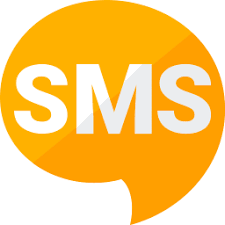

image ©iconexperience.com
SMS is the Short Messaging System available on all mobile phones. An app on a user's phone will allow them to send and receive SMS messages. An SMS message is limited to 1120 bits which will be coded to 160 7-bit characters or 140 8-bit characters. Thus a basic SMS message cannot send much information.
The first SMS was sent by a Vodafone engineer on 3rd December 1992. Initially the service was use internally within a MNO to communicate with service engineers. However, the MNOs soon realised this was a feature that would be useful to customers and SMS messages were released to customers, and at the time charged for at a rate of 10p per message. Only later were messages bundled into contracts and now unlimited messages are included in all but the most basic customer package.
The SMS message is sent over the telephony system and not over the data network. Within the 2g/3g telephony system there are a number of channnels used for phone calls and a control channel. The control channel manages the phone calls, amongst other tasks and it is through this control channel that messages are sent. As the strength of a signal degenerates with distance form the antenna, the data services are lost first. Then the phone connection can become crackly and then lost leaving the SMS systema as the most reliable in area of poor or very little connection.
When data is sent over HTTP it is the client that requests the data, a pull technology. SMS, because it is linked to the phone control channel, is a push technology. The SMS messages are pushed to the recipient's phone from the SMSC. Thus SMS messages are fundamentally different from other messaging systems.
SMS messages can be sent at any time and do not rely on the receiver being online for the messages to be received. It is a store and forward technology; once the message is sent, the network looks to store the message until it can formward to the receiver. This makes it less disturbing than a phone call. Often the message will appear at the receiver instantaneously and without disturbance but sadly this cannot be relied upon. There are occasions when the transmission is delayed.
Sending an SMS
- Sender created the SMS message within an App on the phone
- The App sends the message to the SMSC (Short Message Switching Centre) via the phone network. Within the settings of a phone there will be the phone number of the local network SMSC.
- The message is stored within the SMSC which then finds the recipient.
- If the receiver is on the same network as the sender, the message is then sent to the reciever
- If the receiving phone is on another network, the SMSC forwards the message to that network's SMSC for this network to store and forward the message to the recipient
- Tracking is possible for SMS messages. The sender will know that the recipient has received the message.
© mobilephonetechnology.co.uk all rights reserved 2017-2025



